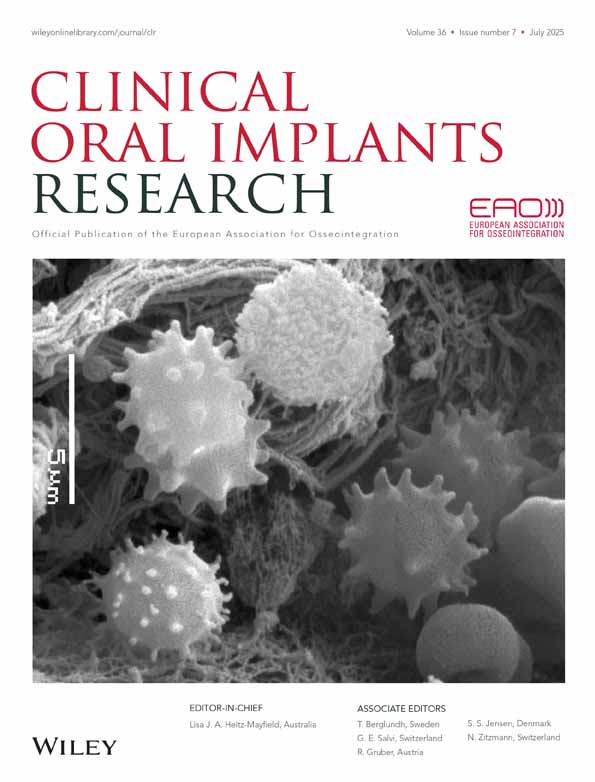Contribution of the periosteum to bone formation in guided bone regeneration
A study in monkeys
Abstract
The periosteum has been referred to as a protective barrier in the regeneration of bone defects. The objective of this study was to determine the contribution of periosteum as a natural barrier to bone formation in guided bone regeneration. Mucoperiosteal flaps were elevated bilaterally on the buccal aspect of the mandibular angle in 5 cynomolgus monkeys. Bleeding was induced by perforating the cortical bone. A hemispherical titanium mesh was fixed over the areas thus creating a void 5 mm in height between the mesh and the bone surface. On one side the mesh was covered with an ePTFE membrane (test side). The contralateral side did not receive further treatment (control side). After 4 month healing, histomorphometric analyses were used to determine the percentage of new bone in the void underneath the mesh, and the ratio between mineralized tissue and marrow spaces in new and old bone. The mean percentage of new bone tissue was 77.2±7.5% for the test sides and 68.6±8.4% for the control sides (P=0.018, t-test). This new bone contained 80.0±3.6% mineralized tissue in the test group and 82.5±5.0% in the control group (P>0.05, t-test). In both groups the newly formed bone exhibited significantly less mineralized tissue than the old bone (P<0.05, t-test). It is concluded from this study that new bone formation was enhanced by the additional use of an ePTFE membrane under a periosteum-lined mucoperiosteal flap when space maintenance was excluded as a critical factor.




